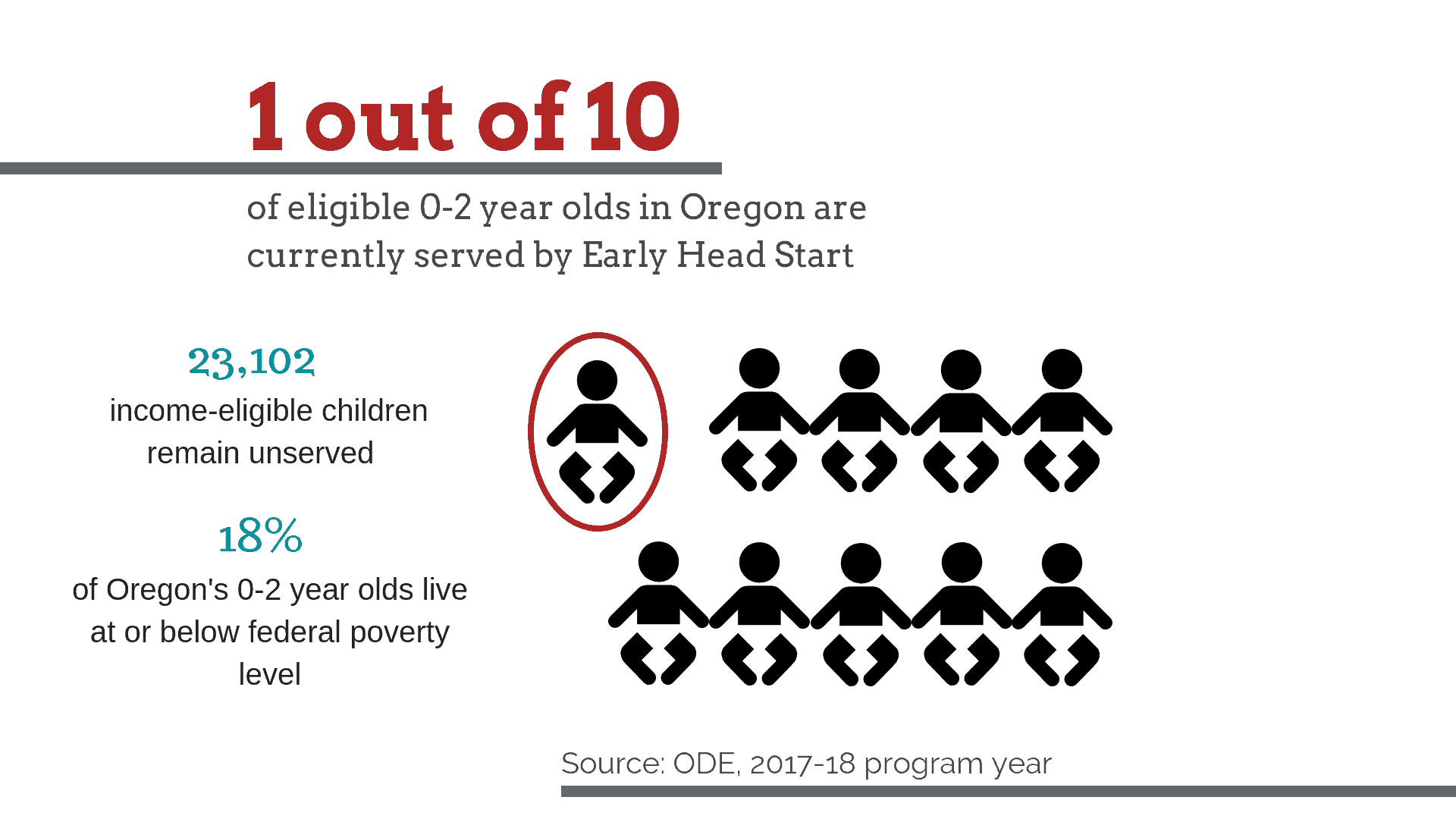What is Early Head Start (EHS) and how is it different from Head Start?
Early Head Start serves expectant mothers and children from birth to age 2 in a variety of settings. It began as a federal program in 1994, almost thirty years after Head Start was launched to improve educational and life outcomes for low-income children ages 3–5.
The intentional two-generation approach of EHS focuses on supporting healthy parent/child relationships, child growth and development, and self-sufficiency. Eligibility for the program is mostly income-based, though children in foster care or the child welfare system may be enrolled regardless of family income.
What does Early Head Start look like in Oregon?
According to the Oregon Early Learning Division (ELD) there are 93 EHS sites across the state. These community-led programs include center-based services, home-based services and family child care services. Parents can choose one or a combination of options. For working families, EHS may serve as a child care option. Home visiting services, parent playgroups, and other meetings that encourage socialization are often a part of EHS.
The federal government funds about 2,000 EHS slots in Oregon and the state funds another 64 slots at a cost of $1.6 million annually.
However, the ELD estimates that the number of income-eligible children for this program is closer to 25,000, meaning that only 1 in 10 eligible children currently receive Early Head Start services.

What are the benefits to families and communities?
Large scale studies of EHS have shown a wide range of social-emotional and cognitive impacts for children who participate in Early Head Start, as well as improvements in parenting skills and home environments. The greatest benefits are attributed to children and families who receive higher levels of service.
In a recent study co-authored by Portland State University researcher, Beth Green, Early Head Start was linked to lower incidences of child abuse and supportive of other positive long-term stability outcomes.
How can we expand access to Early Head Start to more families?
Children’s Institute and other child and family advocates know that supporting families and children in their primary years make sense as a proactive strategy to support healthy development, and as a cost-effective measure that can save on later social service and educational expenditures down the road.
Notably, the Joint Committee on Student Success, a bi-partisan group of state lawmakers tasked to help improve Oregon’s public education system, has called for increased access to Early Head Start and other early childhood services in its policy recommendations to Governor Kate Brown. The committee estimates that adding an additional 1,000 slots to Early Head Start will cost an additional $25 million.
If you or someone you know has benefited from Early Head Start programming and would be open to sharing your story, we’d love to hear from you!

